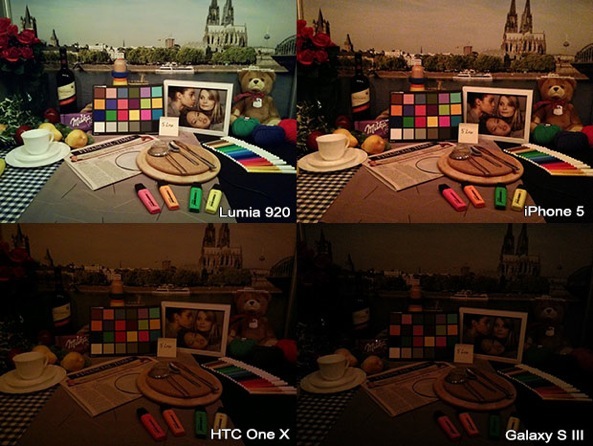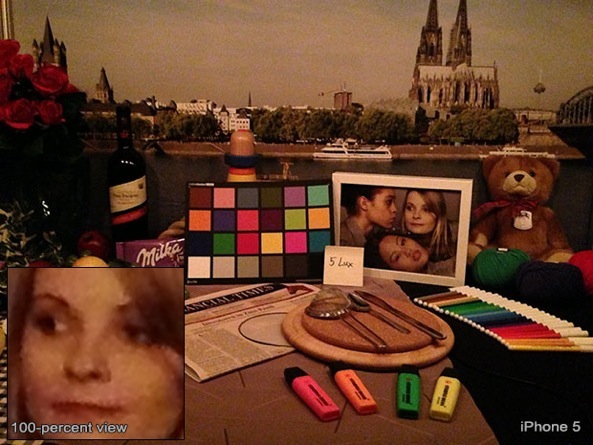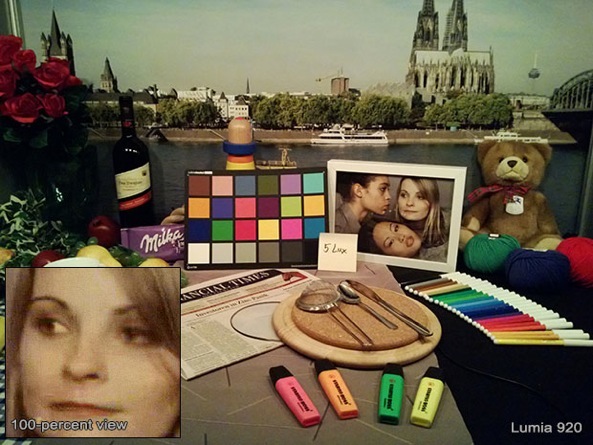The biggest change in the iSight camera found on the back of the iPhone 5 is not its sapphire lens cover, the new panorama mode, faster performance, better video stabilization or crisper photos stemming from enhanced post-processing capabilities provided by the heavily customized, Apple-designed A6 chip.
It’s its markedly better performance in low-light situations. The difference between the iPhone 4S and 5 camera becomes readily apparent on photos taken under artificial light, poorly lit scenes or no light at all.
By way of Engadget, we are now able to compare night shots taken on the iPhone 5 against those snapped up using Nokia’s newly introduced Lumia 920, Nokia 808 PureView device, HTC’s flagship One X and of course, Samsung’s Galaxy S III. Who do you think came on top?
The iPhone was also a solid runner-up with this test — it didn’t perform as well in even dimmer light, as we experienced when capturing images from a dark rooftop late at night, but it did yield decent shots in the lab.
Even so, the frame is underexposed, includes a heavy orange cast and the 100-percent view is heavily pixelated and noticeably soft.
Deceptive advertising be damned, the Lumia 920 has the most even exposure of all five devices, even with a slight yellow cast appearing on dimly lit images.
Here, a closeup of a photo taken with an iPhone 5.
And this image was taken using a Lumia 920, Nokia’s flagship Windows Phone 8 device.
HTC One X and Samsung Galaxy S III exhibit noticeably worse low-light image quality than both the iPhone 5 and Nokia devices.
A 101MB ZIP archive containing high-res versions of test photos is available right here.
Engadget mobile editor Myriam Joire put together this video clip highlighting the official results and noting some of the differences between the devices.
Of course, the Nokia 808 PureView beats every other smartphone to the punch when it comes to low-light camera tests because the 808, which was released last year and runs on Symbian, has a whopping 41-megapixel sensor, meaning it has way more pixels to work with in low-light situations.
If you’re reading this, you may be interested in our ongoing iPhoneography series. And those of you who are really into iPhone photography are welcome to tag their Apple-related photos with the #iDownloadBlog hastag.
You can also follow me @dujkan on Instagram.
I’d love to hear from iPhone 5 owners.
How’s your low-light camera performance?
Is it much better than you hoped it’d be?
Did you expect more advances in the iPhone 5 camera department?


